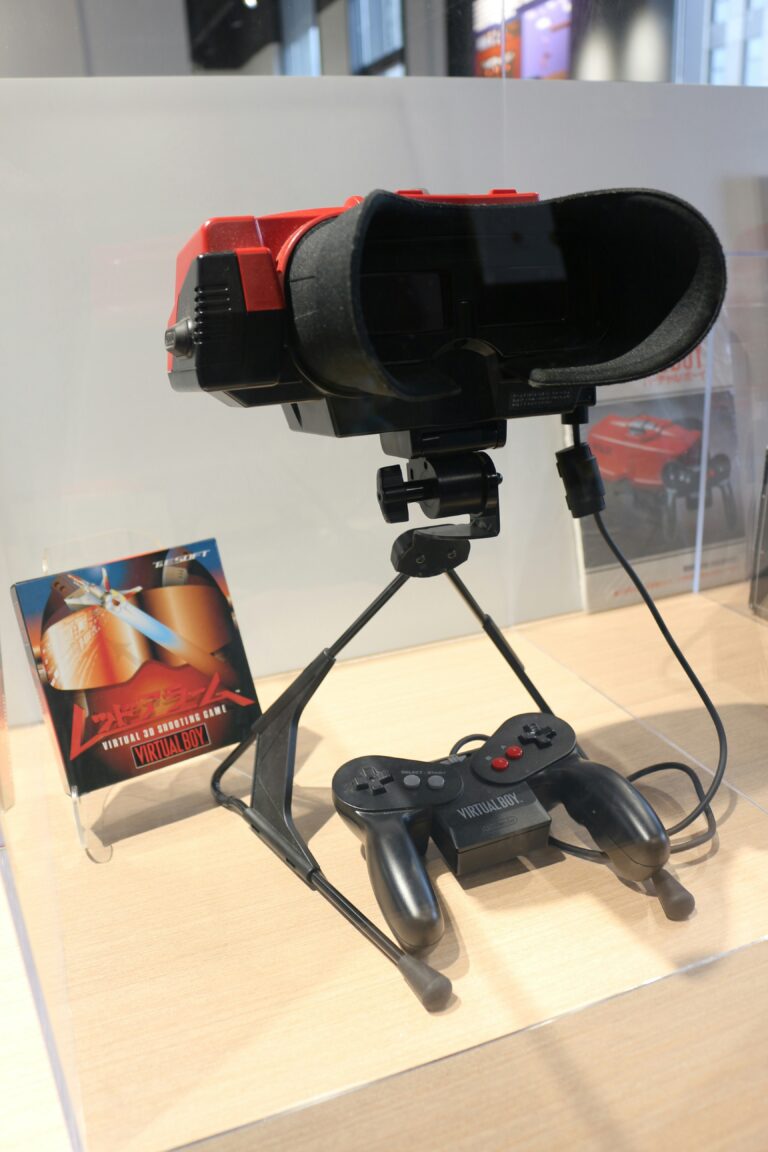As we journey through the labyrinthine corridors of gaming history, we’re bound to stumble upon gems of timeless brilliance that continue to shape the landscape of modern gaming. Super Metroid, the third installment in the Metroid series, is one such crown jewel. Launched in 1994 for the Super Nintendo Entertainment System, this groundbreaking game set new standards for exploration-based gameplay, striking a balance between open-world freedom and structured storytelling that has continued to inspire and inform the design of contemporary video games. It is the purpose of this in-depth, comprehensive guide to dissect the ingenuity of Super Metroid’s design, and offer insights into how its legacy can be leveraged to craft compelling modern exploration games.

Super Metroid is revered for its meticulously designed world, filled with secret passages, hidden power-ups, and imposing foes. This world is not spoon-fed to the player through explicit directions or linear pathways; instead, it’s unraveled through exploration and experimentation. This design philosophy, known as “Metroidvania,” encourages players to revisit previous locations with new abilities, fostering a sense of discovery and progression. It’s a formula that is now ubiquitous in many modern exploration games, from Hollow Knight to Ori and the Blind Forest. Over the course of this comprehensive guide, we will delve into the intricate mechanics and design choices that make this possible, providing game developers with practical insights into creating engaging exploration experiences.
Furthermore, Super Metroid’s immersive narrative, communicated not through verbose exposition but through environmental storytelling and gameplay, is a masterclass in subtlety and visual narrative. It takes the player on an emotional rollercoaster, from the eerie isolation of the alien planet Zebes, to the adrenaline-pumping confrontations with monstrous enemies, culminating in an unforgettable climax that is as triumphant as it is poignant. We will dissect the techniques employed by the game to achieve this narrative success, and offer suggestions on how these principles can be applied to create rich, immersive narratives in modern exploration games.
In the following sections of this guide, we’ll journey deep into the heart of Super Metroid, examining its gameplay mechanics, level design, narrative techniques, and the innovative ways it challenged players. We’ll also explore how these elements have influenced modern games and offer practical tips for developers looking to harness this legacy in their own titles. Whether you’re a seasoned game designer, an aspiring developer, or a passionate gamer curious about the mechanics behind your favorite exploration games, this guide promises to offer enlightening perspectives and valuable insights. After all, in the words of Samus Aran herself, “the last Metroid is in captivity, the galaxy is at peace,” but the legacy of Super Metroid is still alive and kicking, waiting to be unleashed in the games of tomorrow.
Understanding Super Metroid’s Legacy
Super Metroid, a game released in 1994 for the Super Nintendo Entertainment System, is a cornerstone of the gaming industry. It is renowned for its game design, especially its open-ended exploration and atmospheric storytelling. Its influence permeates countless modern exploration games, cementing its legacy within the gaming industry. Let’s dive deeper into what makes this game a classic and how its elements can be applied to contemporary game development.
Non-Linear Exploration
Super Metroid championed the concept of non-linear exploration. Rather than following a strict path, players are encouraged to explore Zebes, the game’s setting, at their own pace. This encourages exploration and rewards players with new abilities, items, and pathways. It’s a formula that many modern games have adopted, notably within the Metroidvania sub-genre, a term coined in homage to Super Metroid and Castlevania. Non-linear exploration fosters player autonomy and enhances replayability, two aspects paramount to crafting successful exploration games.
Atmospheric Storytelling
Super Metroid’s storytelling is subtle and atmospheric. It relies on environmental cues and player discovery rather than explicit narrative. This approach adds a layer of intrigue and encourages players to piece together the story themselves. Many modern games use similar techniques, including Dark Souls and Hollow Knight. Utilizing atmospheric storytelling can engage players on a deeper level, making them active participants in the narrative.
Intuitive Game Design
Super Metroid’s game design is intuitive and player-friendly. It gradually introduces game mechanics and new abilities, allowing players to learn and adapt naturally. The game also cleverly uses its environment to guide players, often without their knowledge. These design choices have informed countless modern games, contributing to Super Metroid’s enduring legacy. Intuitive game design can enhance player experience and promote player retention, both of which are crucial for modern exploration games.
Implementing Super Metroid’s Elements in Modern Exploration Games
Emulating Super Metroid’s successful elements can greatly enhance modern exploration games. Below are some practical ways to implement its concepts:
Non-Linear Exploration
Creating a non-linear world promotes exploration and player autonomy. It encourages players to navigate the game at their own pace, often discovering hidden secrets and pathways. To implement this, game developers can:
- Create multiple pathways to objectives.
- Include optional areas with unique rewards.
- Design the game world in such a way that encourages backtracking and exploration.
For a detailed breakdown of non-linear exploration in game design, you can watch the YouTube video titled “Non-Linear Game Design: A Case Study” by the Game Maker’s Toolkit.
Atmospheric Storytelling
Developing an atmospheric narrative engages players on a deeper level. Rather than explicitly telling a story, you can:
- Use environmental cues to suggest narrative elements.
- Use item descriptions to subtly reveal backstory.
- Create NPCs that contribute to the world’s lore without explicit exposition.
For an in-depth analysis of atmospheric storytelling, you can check out the YouTube video “The Power of Subtext in Video Game Storytelling” by Writing on Games.
Intuitive Game Design
Intuitive game design enhances player experience and retention. To implement this concept, developers can:
- Introduce game mechanics gradually, allowing players to learn naturally.
- Use the environment to subtly guide players towards objectives.
- Design controls and mechanics to be user-friendly and intuitive.
For a comprehensive understanding of intuitive game design, watch the YouTube video “How Game Designers Protect Players From Themselves” by Mark Brown.
Comparing Super Metroid with Modern Exploration Games
The table below compares Super Metroid with two modern exploration games: Hollow Knight and Axiom Verge. It highlights the similarities and differences in their approach to non-linear exploration, atmospheric storytelling, and intuitive game design.
GameNon-Linear ExplorationAtmospheric StorytellingIntuitive Game DesignSuper MetroidYesYesYesHollow KnightYesYesNoAxiom VergeYesNoYes
As you can see, all three games implement non-linear exploration, with varying degrees of atmospheric storytelling and intuitive game design. By studying these games, developers can gain insights into what works well in the exploration genre and where there might be room for innovation.
Super Metroid’s legacy continues to shape the exploration genre, and by understanding its successful elements, developers can craft engaging modern exploration games. Always remember, a well-crafted game can provide an unforgettable experience for players, just as Super Metroid has for the past two decades.
Conclusion
In conclusion, Super Metroid’s enduring legacy is indisputable. Its influence can be seen throughout the gaming industry, with many of its elements serving as a blueprint for contemporary exploration games. The game’s unique approach to non-linear exploration, atmospheric storytelling, and intuitive game design have been adopted by many modern games, demonstrating the impact of Super Metroid on the exploration genre.
This article has highlighted the three critical aspects of Super Metroid that make it a timeless classic. First, its non-linear exploration provides players with a sense of freedom and autonomy, enhancing replayability. Games like Hollow Knight and Axiom Verge have adopted this approach, underscoring its continued relevance. For developers, the implementation of non-linear exploration can drive player engagement and ensure long-term success.
Second, Super Metroid’s atmospheric storytelling engages players on a deeper level, encouraging them to become active participants in the narrative. The use of environmental cues and player discovery, rather than explicit narrative, fosters a sense of intrigue that can hold players’ attention for extended periods. Developers can learn from this approach to create immersive and engaging narratives.
Lastly, Super Metroid’s intuitive game design greatly enhances the player experience. The gradual introduction of game mechanics and new abilities, along with the clever use of environment to guide players, contributes to its enduring appeal. Emulating this aspect can significantly improve player experience and retention in modern exploration games.
Applying Super Metroid’s successful elements can greatly enhance modern exploration games. Creating a non-linear world, developing an atmospheric narrative, and implementing intuitive game design can significantly improve player engagement and experience. For deeper insights, developers can refer to the resources mentioned, such as the YouTube video by the Game Maker’s Toolkit on non-linear game design, the Writing on Games video on the power of subtext in video game storytelling, and Mark Brown’s video on how game designers protect players from themselves.
Comparing Super Metroid with modern exploration games like Hollow Knight and Axiom Verge has also revealed interesting insights. All three games have implemented non-linear exploration but differ in their approach to atmospheric storytelling and intuitive game design. Studying these differences can provide developers with insights into what works well in the exploration genre and where there is room for innovation.
Ultimately, understanding Super Metroid’s legacy is crucial for any developer aiming to create a successful exploration game. Its innovative approach to game design and storytelling set a new standard in the industry that continues to influence modern games. As we move forward, it will be fascinating to see how future games build upon and deviate from Super Metroid’s foundational elements to create new and immersive gaming experiences.
As you engage with this topic, I would love to hear your thoughts. Do you have a favorite exploration game that utilizes these elements? How do you see the future of exploration games evolving? Feel free to comment and share this article with others who might be interested. Let’s continue the conversation on the lasting impact of Super Metroid and its influence on the world of gaming.



